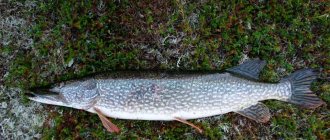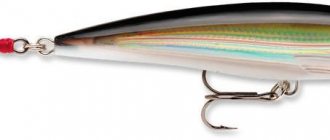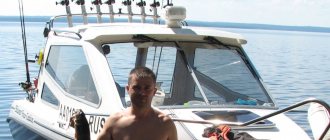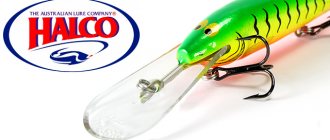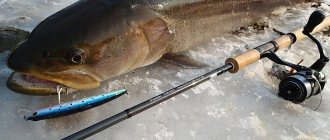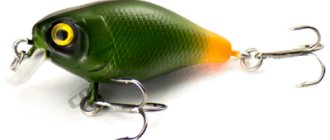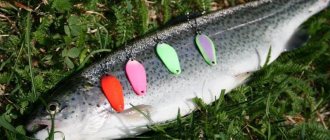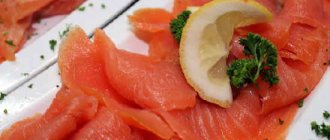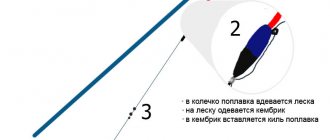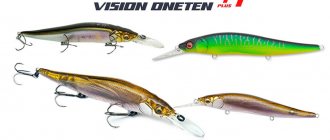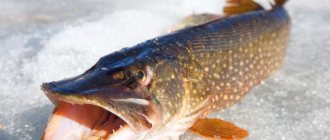Fishing for salmon or salmon using a spinning rod
Catching salmon or salmon with a spinning rod is not an easy task and will require a more in-depth approach from the fisherman in choosing quality gear, as well as knowledge about this very beautiful and tasty fish, where, when and with what and under what conditions you can catch it. It should be noted that the name salmon includes many fish from the salmon family, species that belong to the genus of Atlantic salmon and the genus of Pacific salmon. And yet the term salmon itself is more applicable to Atlantic salmon, or as it is often called salmon.
Where to catch salmon on a spinning rod
Atlantic salmon or salmon are caught using spinning rods and casting mainly in the fall before spawning and in the winter after spawning, when they come closer to the coastline, closer to the mouth of rivers and enter rivers. Salmon are also caught in the spring and summer during feeding time by trolling or fishing, but in lakes and bays of the sea. You cannot catch salmon during the spawning season, and in some places fishing for this fish is prohibited all year round.
When going fishing to catch salmon using a spinning rod, it is better to study in advance the lifestyle and habitats of salmon or salmon, taking into account that the feeding and spawning periods of salmon from one water area may not coincide with the same periods of salmon from another water area, and depend on the geographical location of the fishing area . For example, in the White Sea and the Baltic Sea the periods do not coincide. And also to catch this fish from the salmon family, you must purchase a license to catch salmon or salmon.
In the rivers of the Arctic Circle on the Kola Peninsula, the most interesting period for salmon fishing with a spinning rod is from mid-September, since autumn salmon is the largest and comes in greater numbers than summer salmon. Knowing the running time of the fish, it is necessary to find in advance the best river for salmon fishing, as well as find out what are the conditions for purchasing a license to catch salmon and in which sections of the river this is allowed. The best is a short and full-flowing river with a channel where there is a good slope and many large stones with clear water, but not stormy. Such rivers usually flow from mountain lakes to the seas.
Salmon or salmon, approaching the mouth of the river, gathers in groups at the border of salt and fresh water to get used to fresh water. When the water in the river rises slightly, during a flood, a significant part of the flock, which is already accustomed to fresh water, immediately rushes into the river. The fisherman should not miss such a moment, because at such moments there is a good catch of several salmon in a few hours of fishing. Sea tides are also of great importance if salmon fishing takes place near the mouth of a river. At the moment of high tide, the salmon waiting at the mouth rush into the river.
Trout on a spinning rod
Trout can be caught on fast, impetuous rivers of the Far East and mountain rivers of the North Caucasus. She prefers cool and clean water, rich in oxygen.
Trout habitats
Trout loves snags, which is why they are most abundant there. She loves places where the river is enriched with oxygen, and these are various riffles or small waterfalls. It is in these seething streams that we need to look for it. Closer to the south, you can catch it all year round, but on the northern rivers, trout fishing is a seasonal affair. Depending on the nature of the reservoir in which it is found, it is divided into brook, lake and rainbow trout, and its size depends on the richness of food in a given reservoir.
Characteristics of the rod
For trout fishing, a long spinning rod up to 3 m is used. This is due to the fact that trout stay at a distance from the shore and it is necessary to cast the bait far. It is advisable to choose a rod of medium hardness and fast action in order to respond to bites in a timely manner. This fish takes the bait sharply and quickly, and therefore a quick hook is needed to minimize fish escapes. When fishing on small rivers, where you can “wad” fishing, you don’t need a long rod; 1.5-2 meters long is enough.
Equipment
The choice of fishing line or cord is also a crucial moment in organizing successful fishing. It should be borne in mind here that salmon fish are fast and strong, and therefore, it will be a great pity if the fishing line does not withstand its pressure. When fishing for trout, you can take a monofilament line with a diameter of 0.2 mm or a braided line with a diameter of 0.15 mm.
Preference can be given to “braid” because of its low specific stretch. This allows you to instantly transfer the moment of bite to the rod. To catch salmon, you will need a more powerful fishing line, and possibly a more powerful rod with an inertia-free (or inertial) reel. To catch big fish, fishermen are increasingly using baitcasting (sea) reels. They are more reliable and designed specifically for fishing for large fish. The fishing line is usually braided, at least 0.25mm. Fishing for salmon requires a lot of skill and patience. If handled ineptly, this fish is capable of breaking or tearing any tackle. This fish fights for life to the last, and therefore you need to be prepared for a desperate fight.
Video with a wobbler and silicone for trout:
Spinning rod and lures for salmon or salmon
On the rivers, salmon are caught using a spinning rod with a spoon or wobbler. Spinning equipment and bait for salmon are the same as when fishing for trout or salmon in bays off the coast. Since you will have to fish in the river in wading pants, swampers or waders, the length of the spinning rod is 3.0-3.5 meters in wide open spaces, but if there are a lot of trees and bushes on the banks nearby, then it is better to take a spinning rod for salmon that is shorter and longer 2.4-2.7 meters. In general, it is better to have two or three spinning rods of different lengths and with different tests and rod structures with you on such fishing.
Salmon or salmon is a very strong fish, so the spinning rod, reel and line for catching salmon must be very strong and of high quality, since this fish, once hooked, will fight and resist, jumping out of the water, and in the water it will pull into the depths or beyond stone. For this type of fishing, a spinning rod for salmon requires a medium action or a medium fast action with a rod weight of 15-45 grams.
A spinning reel for salmon is usually used without spinning, 2500-4000 in size, with a spool for thick fishing line, on which 100-150 meters of fishing line with a diameter of 0.3-0.4 mm can be laid. You can also use a cord, since when using a cord the bait flies further and the fish bite is more clear. The spinning rod can also be equipped with a multiplier reel for casting, but the fisherman will need skills in using such a reel, and a good multiplier reel for casting costs a lot of money.
Lures for salmon or salmon for spinning fishing are oscillating spoons weighing 15-40 grams, 10-20 cm long, copper and silver colors, as well as bright and sharp colors. Typically, salmon spinners for casting with a spinning rod are, as a rule, narrow spoons with dynamic play when casting quickly, as well as spinners that fly smoothly without gliding or somersaults when casting.
Spoons from Kuusamo
Hauki is translated from Finnish as “pike”. This spoon from Kuusamo is designed primarily for catching this predator, but is often used for salmon hunting.
When using Hauki, the most common approach is to retrieve with light short twitches of the rod and periodic pauses, although the classic method of uniform retrieve with smooth oscillations of the bait can also be effective. A wide variety of spinners in terms of color allows you to choose a salmon spinner for any natural conditions.
Lippa Rasanen is a hybrid spinner that combines the properties of rotating and oscillating models. In the water, the spoon creates quite strong vibrations and is clearly visible to predators. Suitable for river fishing for salmon and other predators, especially during high water.
Kuusamo Professor is already considered a classic in Finland. During light jerking or trolling, this spoon perfectly imitates the movements of a live, active fish, which, of course, is very attractive to predators. It resembles a wounded fish, and therefore pike, pike perch, trout, salmon and some other predators are often attracted to this bait. Kuusamo Professor often catches large trophy fish.
Kuusamo Suomi is an elongated spoon with an impressive weight, which is best suited for salmon fishing in river rapids. It is easy to cast over long distances and works stably even in strong currents.
Kuusamo Taimen also plays very energetically and can be a good bait option for spinning salmon casting. A distinctive feature of the spinner is the slight bend of the body in the shape of the English letter S. The colors of this model, as a rule, are quite bright.
Kuusamo Taimen Super is especially good for catching brown trout in the surf. The bait is characterized by strong and intense vibration during retrieval, and the petal also provides light glare with additional vibrations. Suitable for catching not only salmon, but also other predators (pike, pike perch, large perch).
Salmon bite on a spinning rod
In the river, salmon tries to pass through the turbulent sections of the river without stopping, because there is nowhere for it to hide to rest and it will immediately be carried back by the powerful current. There are quiet areas on the river, where salmon can be found, resting from the rapids and most likely behind large rocks. Such places must be remembered as you move with a spinning rod along the river, and if there were no bites during the initial requests for a salmon spoon, then you definitely need to return there a little later and try to place the bait there again, and this time a bite may already occur.
Of course, on the river, you can’t throw a spoon just in the place where you expect the salmon to bite. You need to throw the spoon a little higher, taking into account the fact that during the current and when reeling in the fishing line, the spoon or wobbler for salmon will be in exactly the right place and will pass at the point where the fish is expected to bite. Retrieving the bait deeper or higher, fast or slow, depends on its shape, weight and action. But salmon from any depth will notice or feel with their lateral line organs a passing spoon and will probably rush to the spoon, as long as it does not frighten him with its bright polishing or strange shape and frightening vibrations.
The salmon or salmon bite is similar to a hook, and then several short jerks. And then there was a pull and suddenly the line began to leave the reel, the main thing is that the clutch was set correctly, or the line would break. Once hooked, the salmon fidgets in place at first, probably trying to understand what happened to it and probably trying to spit out the inedible object that it grabbed in its mouth.
And then the fisherman will need all his strength, skill and patience, the salmon begins its throws, now across the river to the opposite bank, now going under the stones, now jumping out of the water, trying to get rid of the hook. Fishing for salmon can take a lot of time and effort from a fisherman, as this fish is very strong and tireless.
Spinner for salmon
Most often, when fishing for salmon, oscillating spoons of large weight and length are used, the performance of which directly depends on the strength of the current, width and depth of the reservoir. It is generally accepted that a salmon lure should touch the bottom the first time it is cast across the current. The angle of the fishing line in relation to the bottom is approximately 45 degrees. In such conditions, the wiring will be attractive to the predator, and the chance of snags will decrease.
We have compiled a short list of the most catchy lures for salmon. Much attention was paid to salmon spinners from the Kuusamo company, which showed their high efficiency in catching salmon, pink salmon, taimen, grayling, trout and even pike. Naturally, these lures can easily catch other types of fish, but time has shown that their calling is salmon fishing.
Where and when is salmon caught?
Salmon is a fish that lives in seas and lakes, but when it is time to breed, it travels upstream in rivers to spawn. The time of entry into the rivers varies among different species of this valuable fish. In “spring” crops this occurs in the summer and early autumn, and in “winter” crops in late autumn or early spring. Fish live there for a year before spawning begins. At this time, they find shallow areas with fast currents, preferring a sandy-pebble or rocky bottom near spawning sites and above rapids and rifts.
The places where various streams and rivers flow into the sea are considered good for salmon fishing. Due to the presence of fresh water, such areas provide an abundance of plant and live food. Large concentrations of salmon are found here almost year-round.
Choosing tackle
The main condition when choosing salmon tackle should be its strength - the length of the predator reaches 2 m, and the maximum weight - up to 70 kg. They have a lot of energy and offer great resistance when fishing, especially in places with strong currents. Roughly made tackle can scare away fish - you need to pay attention to the convenience and reliability of the equipment. It is necessary to take into account the fishing conditions and the presence of underwater shelters - stones and snags.
Traditional fishing methods are fly fishing, spinning and float rods. Fishing with net hooks is prohibited.
Spinning equipment
This is the easiest way to catch. Using the fly fishing method requires great dexterity and skill from the fisherman.
If salmon fishing is planned on a small river, you can choose a one-handed spinning rod with a length of 180-240 cm with a rigid action and a test of 10-40 g. It is recommended to use rings of a larger diameter than in other cases - about 40 mm, this will make it easier to cast light baits, and there will be no problems when replacing the fishing line with a thicker one.
If you plan to fish on a large river, then you should choose a two-handed rod with a length of 240-300 cm. This will ensure good long casting and will help in the fight against large fish.
Reels and lines
You should choose a quality reel, avoiding cheap options. The strength and reliability of this piece of equipment is of great importance when playing such strong fish. The internal diameter of the reel with a moving spool should allow winding up to 120 m of fishing line.
For this type of fishing, you can use both braid and monofilament. Most fishermen try to avoid braided line because... When fishing for fish, many problems arise.
The braid should be dense, round in cross-section, 0.13-0.15 mm thick. The color shade does not matter much, but it is recommended to color the 2 m at the end with a dark marker so that it is invisible in the water.
For monofilament, the best diameter is 0.25 mm; The reserve on the reel must be at least 100 m.
What to catch salmon with
The most popular ones for salmon fishing are elongated oscillating spoons. The brightness and variegation of color is a plus. The weight should be at least 20 g, and the length should be 7-15 cm. For fly fishing, both wet and dry flies are used.
Wobblers
The best wobblers used for salmon fishing:
- Invincible Floating. It swims in the upper layers of the water, but after a small jerk it dives, imitating the behavior of a small fish. After the wiring stops, it returns to the surface again. Casting is easy and effective when used for trolling.
- Rublex Orkla. The best oscillating spoon for salmon fishing. It has a traditional double curved shape; Available in various types of colors. During the retrieve, it swims spasmodically and dynamically, imitating a fleeing prey. The most popular bait for fishing in rivers, lakes and the sea.
- Lukris Ninfa Tandem. Imitating a natural nymph, it has great catchability. Wiring speed varies over a wide range; stable rotation occurs in places with fast currents. Recommended for use in deep water areas with fast currents, as well as against the current. This wobbler is designed primarily for catching large specimens of predators.
- Nils Master Spearhead. An effective bait with a sweeping action - during retrieval it is thrown in different directions. It is used for casting fishing in river beds - both by casting and trolling.
Spoons
The most popular salmon spoons:
- Spoon spoon. Weight can range from 15 to 40 g. You need to choose from products of a wide variety of colors based on the transparency of the water. In reservoirs with clear water, dull shades are used, and where it is cloudy, you need to use a spoon with a bright color.
- Swedish iron. The most catchy spoon for catching salmon species. It is produced over a long period of time and is suitable for use in both fast flows and calm areas.
- Scottish Devon. Spinner No. 3−5 is used; Using a swivel to protect the line is a must.
Salmon wobblers from a fisherman's bag
Homemade specimens from Lithuanian craftsmen are always in the arsenal of experienced fishermen. These are high-quality models with a strong blade that easily clears stones and dives to a depth of up to three and a half meters. The game is a little sluggish, not noisy, but the fish are big.
Lightweight wobblers without sound and with pure vibration are used on small rivers for trout fishing. They are made of balsa (the wood is half the weight of cork), they play well, but they require semi-light, lighter tackle. New banana-shaped models are sinking, the blade is curved, saddle-shaped, increasing speed during streams, allowing you to prowl chaotically, teasing the salmon, and then the fish attacks.
Wobblers from the Polish company Salmo, made of foam, dive up to two meters and do an excellent job. The most popular wobblers from the Japanese company Timon Tricoroll.
These floating models have a magnetic casting system that allows them to fly further. This system also improves the stability of the game in the current. A ball is placed inside the body of the wobbler, which is attracted to a magnet located in the middle of the body, so the position of the wobbler in the water is always horizontal. By casting sharply, you force the ball to move to the tail, the range increases, and when the wobbler splashes down, it returns back.
The shape has not changed, the color spectrum has become more contrasting and acceptable for dark layers of water. The workmanship of these baits is impeccable.
Wobblers from the Japanese company Smith with a silvery blue hologram ND82S fly far even with the smallest sizes, and play well in strong currents. You make very short blasts with recoil back and get a bite. Finnish two-piece Rapala wobblers work in fast currents. Their bright fluorescent color attracts large salmon fish.
The trick of the two-piece is that the fisherman clearly knows: the wobbler is working, it transmits nodding vibrations to the tip. Two-piece boats are suitable for trolling (fishing from a moving motor boat or speedboat) on the river; unlike conventional models, they do not capsize on streams.
Wiring Features
Proper fishing is important for successful salmon fishing. The bait should look like a live fish; The features of the bottom topography should be taken into account:
- Uniform. After casting the bait, you need to wait until it sinks into the deep layers and begin to smoothly rotate the reel, making short pauses.
- Stepped. In this zigzag method, using a reel and rod, it is necessary to ensure that the spoon comes off the bottom and falls back onto it.
- Aggressive. Similar to the stepped one, but the jerks are sharper.
- For demolition. The weight of the bait should be selected correctly so that the retrieval is carried out by the current and the spoon does not fall to the bottom.
- Twitching. Wiring without rules. A combination of different jerks is performed, the movement of the bait either accelerates or slows down.
